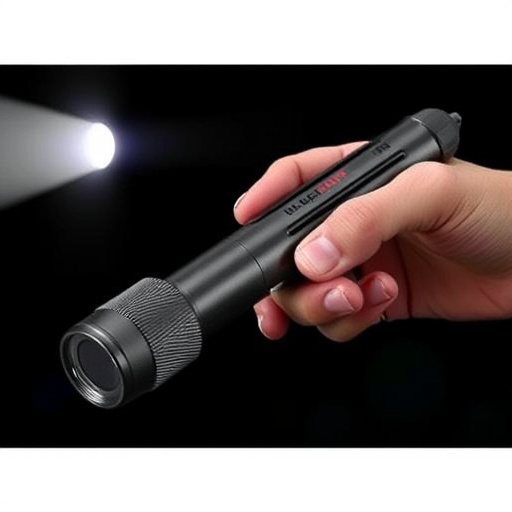Push button expandable batons, specialized impact weapons for law enforcement and military, offer quick extension and retraction with a push of a button, enhancing officer capabilities during encounters. Their global legal status varies under firearm and offensive weapons legislation, with strict licensing, training, and age restrictions enforced by regulatory bodies to ensure public safety. Certification processes prioritize safety and legality through rigorous testing and handling training, clarifying misconceptions about automatic certification for responsible usage in distinguishing real threats from non-justified force scenarios.
“Uncover the world of push button expandable batons and their impact on personal safety. This comprehensive guide explores the legal framework surrounding the carriage of impact weapons, with a focus on understanding the stringent certification process. From the intricacies of global regulations to common misconceptions, we demystify the journey towards compliance. Whether you’re a law enforcement officer or an individual seeking self-defense options, this article provides valuable insights into obtaining your push button expandable baton certification.”
- Understanding Push Button Expandable Batons: A Comprehensive Overview
- Legal Framework and Regulations for Carrying Impact Weapons
- Certification Process: Ensuring Safety and Compliance
- Common Misconceptions and Frequently Asked Questions (FAQs) about Impact Weapon Certification
Understanding Push Button Expandable Batons: A Comprehensive Overview
Push button expandable batons, also known as tactical batons or collapseable batons, are specialized impact weapons designed for law enforcement and military personnel. Their unique feature is the ability to extend and retract quickly with a simple push of a button, making them versatile tools in various situations. These batons differ from traditional fixed-length models, offering both compactness for easy carrying and increased reach when needed.
The mechanism behind these devices involves a high-quality spring system that allows for smooth extension and retraction. Users can quickly deploy the baton to control or subdue an assailant at close range and then retract it for safe storage or transport. Regular training is essential to ensure proper usage, as techniques vary from standard striking methods. This advanced technology enhances officers’ capabilities during encounters, providing a balance between mobility and force application.
Legal Framework and Regulations for Carrying Impact Weapons
The legal framework surrounding the carriage of impact weapons, such as the push button expandable baton, varies significantly across jurisdictions. In many countries, these devices are categorized under broader legislation dealing with firearms and offensive weapons. Regulatory bodies typically require individuals seeking to carry such weapons to obtain specific licenses or permits, subjecting them to background checks and training programs. Compliance with these regulations not only ensures public safety but also demonstrates a responsible approach to weapon ownership.
Specific laws dictate the circumstances under which an individual can legally carry an impact weapon, including any restrictions on places where it may be used or displayed. For instance, some jurisdictions prohibit the carriage of such devices in certain public spaces like schools, airports, or government buildings. Additionally, regulations often outline the minimum age requirements and any necessary training courses, ensuring that users are competent and responsible enough to handle these potentially dangerous tools.
Certification Process: Ensuring Safety and Compliance
The certification process for impact weapons, such as the push button expandable baton, is designed to ensure safety and compliance with legal requirements. This involves rigorous testing and evaluation by authorized bodies to guarantee that the weapon meets specific performance and design standards. Users must undergo comprehensive training to learn proper handling, deployment techniques, and safety protocols. Only after successfully completing these steps can individuals be certified to carry and use such weapons legally.
This certification not only empowers users with the knowledge to handle potentially dangerous situations effectively but also ensures that they do so responsibly and in adherence to the law. Regular recertification may be required to maintain proficiency and stay updated with any changes in regulations, underscoring the ongoing commitment to public safety and responsible weapon ownership.
Common Misconceptions and Frequently Asked Questions (FAQs) about Impact Weapon Certification
Many individuals seeking to obtain a push button expandable baton often encounter misconceptions and have frequently asked questions about the certification process. One common misunderstanding is that simply owning or carrying such a weapon makes one automatically certified to use it legally. In reality, impact weapons like the push button expandable baton require specific training and certification to ensure safe and responsible usage. This certification process involves understanding local laws, learning proper handling techniques, and demonstrating competency in using the device as intended.
Another FAQ revolves around the idea of “self-defense.” While self-defense is a compelling argument for carrying impact weapons, it’s crucial to understand that these tools are subject to strict regulations. The push button expandable baton, or any similar device, must be used responsibly and only when necessary to protect oneself from imminent physical harm. Certification programs educate users on distinguishing between real threats and situations where the use of force might not be justified, thereby promoting safe and legal usage.
In conclusion, navigating the legal landscape of carrying impact weapons, such as the push button expandable baton, requires a thorough understanding of certification processes and compliance with governing regulations. By demystifying these aspects through comprehensive overviews, addressing common misconceptions, and providing clear FAQs, individuals can ensure safe and responsible ownership. This knowledge empowers users to make informed decisions while adhering to legal requirements, fostering a culture of safety and respect for these powerful tools.
